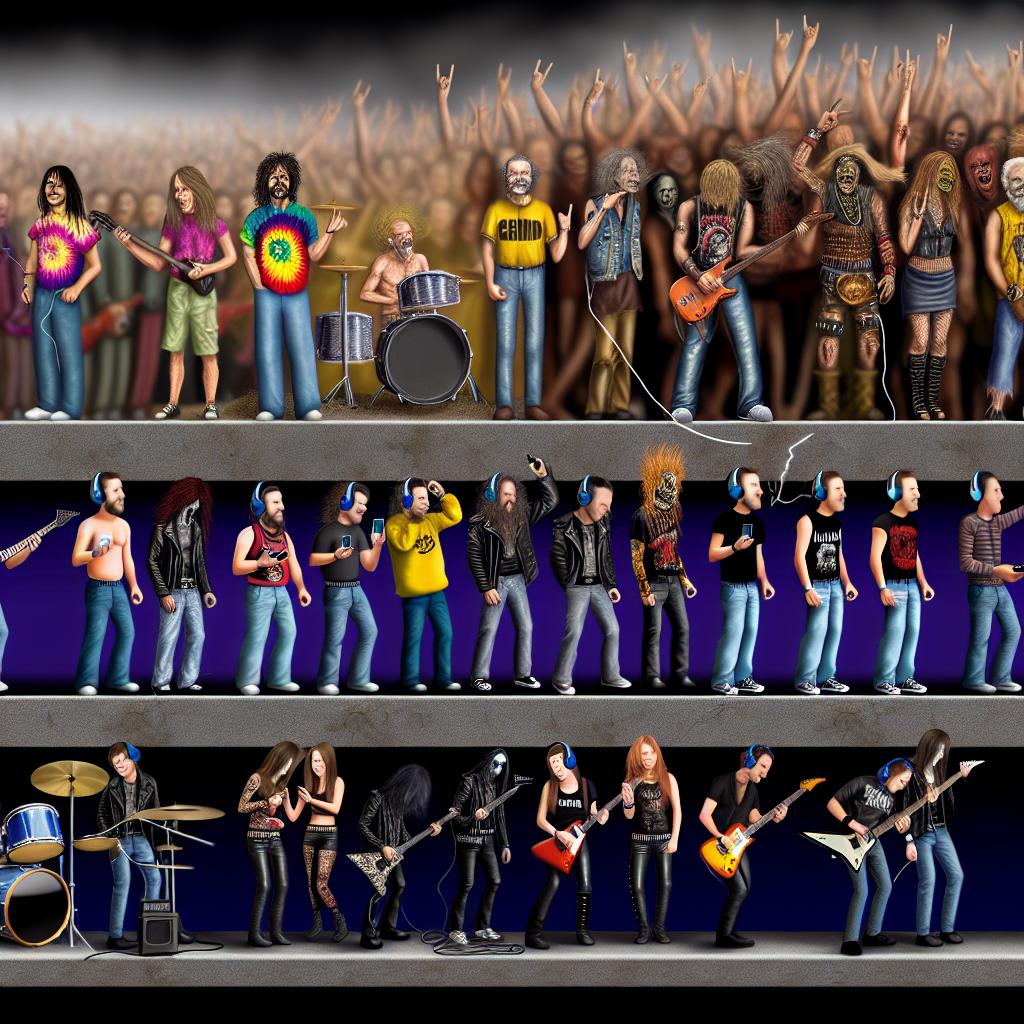The Evolution of Heavy Metal: From the 1960s to Today

The Origins: 1960s and 1970s
Heavy metal music, a genre known for its powerful sound and energetic performances, emerged prominently in the late 1960s and early 1970s. This dynamic style is distinguished by its amplified distortion, the usage of extended guitar solos, and emphatic rhythmic beats. The foundation of this genre is often credited to influential bands such as Black Sabbath, Led Zeppelin, and Deep Purple. These groups played a critical role in developing the heavy metal sound, merging elements of blues rock and psychedelic rock to forge a new musical frontier. Notably, Black Sabbath’s self-titled debut album, released in 1970, is frequently hailed as the first heavy metal album, marking a watershed moment in the genre’s history.
The distinctive sound that these bands pioneered was characterized by the heavy use of distorted guitar riffs and powerful vocals, which resonated with the cultural shifts of the era. Black Sabbath particularly stood out for its dark and often occult-themed lyrics, setting a thematic precedent for future heavy metal music. Meanwhile, Led Zeppelin brought a blend of mystical storytelling and heavy blues influence, while Deep Purple added a level of virtuosic instrumentation that would become a hallmark of the genre.
Development in the 1980s
The 1980s witnessed a significant evolution in heavy metal as it transformed into a dominant force in popular music. During this era, the genre saw the birth of several subgenres, each contributing to its growing diversity. One of the most significant movements was the New Wave of British Heavy Metal (NWOBHM), with bands such as Iron Maiden and Judas Priest infusing speed and intensity into the music. Their approach revolutionized the metal sound, influencing a burgeoning global metal community.
Additionally, the 1980s were shaped by the rise of glam metal, a subgenre that combined heavy metal music with glam rock theatrics and fashion influences. Bands like Motley Crue and Van Halen capitalized on this trend, achieving widespread commercial success with their flamboyant performances and catchy, energetic tunes.
This decade also witnessed the emergence of thrash metal, a more aggressive and fast-paced subgenre. Bands such as Metallica, Slayer, and Megadeth led this movement, known for its complex guitar work and socially conscious lyrics. Thrash metal expanded the scope of what heavy metal could be, pushing its boundaries in terms of speed, intensity, and thematic content.
The 1990s: Diversification and Subgenres
The 1990s brought about a notable diversification of the heavy metal genre, leading to the creation of numerous subgenres that further enriched its landscape. While grunge music, led by bands like Nirvana and Soundgarden, impacted the popularity of glam metal, it simultaneously introduced a more raw and emotive sound. This era also saw the rise of alternative metal, with bands like Tool and Rage Against the Machine blending metal with alternative rock influences, creating a dynamic fusion that appealed to a wide audience.
Another significant development during the 1990s was the emergence of nu metal, an innovative subgenre characterized by acts such as Korn and Linkin Park. Nu metal fused elements of hip-hop, grunge, and heavy metal, creating a sound that resonated with a new generation of listeners. This subgenre often incorporated DJ techniques, rapped vocals, and down-tuned guitars, reflecting the eclectic tastes of the era.
The 2000s and 2010s: Globalization and Innovation
With the dawn of the 2000s and 2010s, heavy metal became a truly global phenomenon, characterized by both stylistic expansion and geographical diversification. Bands from various countries began to earn international recognition, highlighting the genre’s widespread appeal. Notable examples include Opeth from Sweden and Sepultura from Brazil, both of which showcased diverse metal styles and contributed to the genre’s global reach.
During this period, subgenres such as metalcore and deathcore rose to prominence, exemplified by bands like As I Lay Dying and Whitechapel. These subgenres often fused extreme metal with elements of hardcore punk, characterized by aggressive vocals, breakdowns, and complex guitar riffs.
The advent of digital music platforms in the 2000s and 2010s also played a crucial role in the proliferation of heavy metal, facilitating the rise of internet-based metal communities. These platforms allowed for rapid dissemination of music, enabling artists to reach global audiences and collaborate across borders. As a result, heavy metal became increasingly interconnected, with ideas and influences spreading quickly throughout the genre.
Today’s Heavy Metal Scene
Today, heavy metal continues to thrive as a dynamic and diverse genre, constantly evolving while remaining rooted in its storied past. Modern artists explore an extensive variety of sounds and themes, often drawing inspiration from their predecessors while incorporating contemporary technologies and production techniques. This ongoing evolution ensures that heavy metal remains relevant and engaging for both new and longtime fans.
Festivals and tours play a vital role in maintaining the genre’s vibrant live performance tradition, drawing dedicated fanbases from around the world. Events such as Wacken Open Air and Download Festival highlight the enduring popularity and cultural significance of heavy metal music.
As a global phenomenon, heavy metal continues to attract passionate followers, with fans actively participating in its evolution through online communities and music platforms. These spaces provide valuable resources and updates on the current heavy metal landscape, ensuring that enthusiasts stay informed about new developments and emerging artists within the genre. In this way, heavy metal not only retains its historical significance but also remains a living and breathing art form that continues to inspire and captivate audiences worldwide.